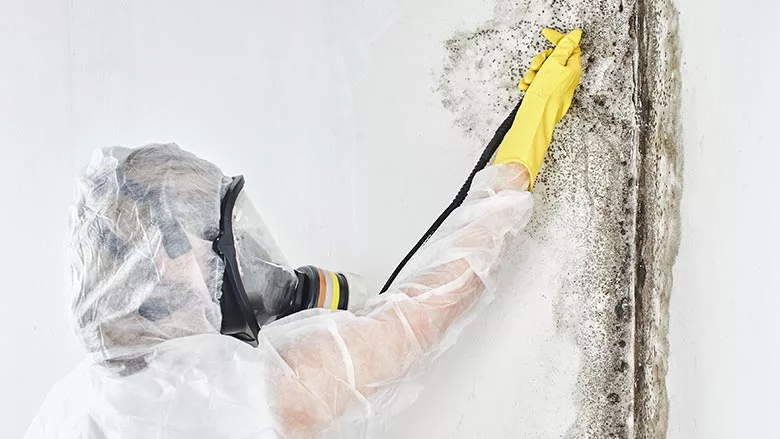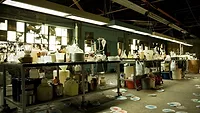Meth Lab Cleanup: Containment is Crucial

Methamphetamine poses dangers not only to its users, but also to those who clean and restore the locations where it is made. The chemicals needed to produce meth can be found in everyday household cleaners and over-the-counter medicines. It’s the process of cooking these materials that causes the most danger to those in the building and their neighbors.
In April, federal agents raided the Franklin, NH apartment of two individuals suspected of manufacturing meth. Shortly after the agent’s arrival, the suspects’ makeshift drug lab exploded, leaving behind a tangle of impacted debris and chemical waste. Drug Enforcement Administration officials contracted ENPRO Services, Inc. to identify and properly dispose of the chemical waste.
ENPRO’s LabPack and Chemical Services team arrived and were briefed by the DEA and members of the Franklin Fire Department. The situation was anything but typical: the explosion and subsequent fire had caused significant structural damage and left some building contents wholly unrecognizable.
“During typical clandestine lab clean-ups, we meet with DEA officials to strategize and evaluate the site-specific risks,” Rob Pelletier, manager of ENPRO’s LabPack and Chemical Services Division, said. “In this case, we also had to rely upon the fire department to assess and mitigate the risks created by the explosion and resulting structural damage.”

“The chemicals at this site posed particular difficulties,” Pelletier said. “Since drug manufacturing was on-going when it was discovered, many of the chemicals were still ‘cooking’ and reacting. They needed to be stabilized during the identification process.” Field analyses took place within the confines of a secure, staging area behind the home due to the instability of the fire-damaged building. Based on their testing results and knowledge of the chemicals used to make methamphetamine, the ENPRO team containerized the waste and labeled it accordingly.
Pelletier and his crew began the arduous task of segregating each chemical according to the requirements of the DEA as well as the other government entities involved. This meant separating the waste by compatibility, completing a detailed inventory for each segregated grouping, and packaging it into Department of Transportation-compliant shippable containers.

During the segregation process, waste was stored on a temporary spill-containment structure to prevent spills or leaks from impacting the ground surface. Through the field testing and segregation process, the team faced an administrative balancing act. A computer management software program helped ensure the entire process was properly documented and all federally required paperwork was printed accurately onsite.

After all site work is complete, regardless of location, time, or how long the job took to complete, the DEA requires that all chemical waste must be transported directly to an approved disposal facility. ENPRO’s Transfer Storage and Disposal Facility in Vermont is currently the only facility in the northeast approved by the DEA to accept and store chemical waste from clandestine methamphetamine labs before destruction. On arrival, the waste is received, logged, and secured in the DEA-designated secure storage containers.
“Every DEA site is different and challenging, but this one was particularly challenging due to the physical hazards we faced,” Pelletier said. “We were working in and near a building that had suffered severe structural fire damage. Traffic control also played a part as the building was situated on a heavily traveled street on the corner of a large intersection. Every step we took required extra care to ensure the safety of our team. Through constant communication with the fire department, DEA and NHDES, the job was completed efficiently and safely.”
Looking for a reprint of this article?
From high-res PDFs to custom plaques, order your copy today!




